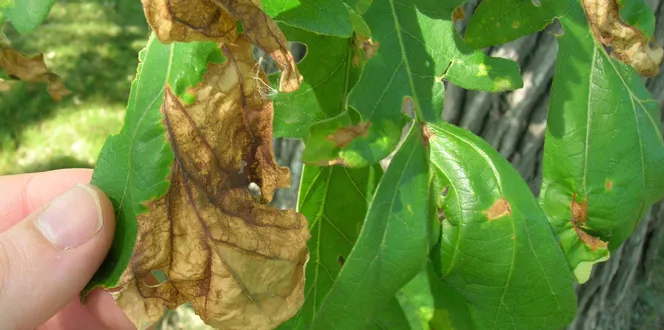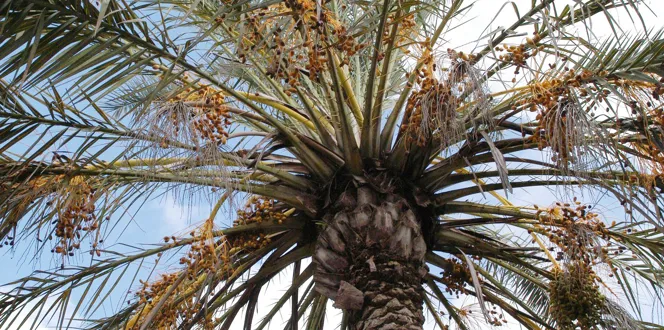Summer has ended and fall is ready for its time to shine. This change of seasons typically brings rainfall and cooler temperatures. Wet, moist soil and chilly temperatures create the perfect time to clear up infected debris and take note of any trees with visible symptoms from earlier this year.
So, what happens if you notice symptoms of diseases this fall? The first step is to know what the symptoms look like. Then, determine how best to deal with diseases for next year.
Common Types Of Tree Fungus And Diseases By Region
Diseases can cause trees to become weaker and increase the risk of falling limbs or even the collapse of an entire tree. These common tree diseases vary in each region of the U.S. because different tree species grow best in different regions.
If your infected tree poses a safety hazard, it should be removed ASAP. You can schedule a tree risk assessment with a certified arborist to determine the severity of damage. (Fall and winter are great times to schedule removal.)
Here is a list of tree fungus types to be on the lookout for in your region this fall:
Northeast Tree Fungus Types
- Dutch elm disease—Commonly found on elm trees, symptoms show up in the hottest time of the year and include premature yellowing and wilting of foliage, and branch dieback.
- Verticillium—Most common on woody ornamental trees, like maple, redbud, magnolia, dogwood, azalea, and locust trees. Much like Dutch elm disease, symptoms become visible at the hottest time of the year and include leaf curling, drying, small yellow foliage, slow growth, and wilting foliage on entire branches, often on one side of the canopy.
- Anthracnose—Common victims are sycamore, oaks, and maple trees. While symptoms, such as small black dots on bark and twigs, crinkling and browning leaves, and “witches’ brooms” at ends of branches, appear in the spring, it is always a good idea to rake fall foliage. This reduces further spreading of anthracnose!
Southeast Tree Fungus Types
- Powdery mildew—Commonly found in dogwoods and lilacs, symptoms appear year-round and include white, powdery material on both surfaces of leaves and twisted, deformed foliage. Prune infected branches and encourage air movement so foliage dries quickly to combat this disease. If necessary, apply a fungicide treatment.
- Fusarium wilt—Palms in Florida and Texas are mostly affected by this disease year-round. Symptoms include one-sided wilt of fronds and gradual decline.
- Ganoderma – A vascular fungal pathogen that infects most palm species. Symptoms appear as progressive wilting from lower to upper frond. Large mushrooms (conks) can be seen on the lower portion of the trunk in advanced stages. Avoid injuring palms.
Midwest Tree Fungus Types
- Needlecast diseases—Typically found in conifers, including spruce, Douglas fir, and Austrian pine trees, this disease infects in the spring and symptoms can become visible during fall. Symptoms include discolored, browning needles on lower branches, and dropping needles in the early fall or spring.
- Apple Scab—As its name infers, apple scab is a common disease of apple and crabapple trees. The scab, caused by a fungus that infects leaves and fruit, renders any fruit inedible. If you think your tree is infected with apple scab, look out for spotty leaves that turn yellow and fall early.
- Rust diseases—Rust causes damage to many popular ornamental plants, like apple and pear trees or cedar trees. When infected, fruit trees have colorful leaf spots and grow disfigured fruits. With cedar trees, the diseases produce round leaf and twig growths, cankers, and twig dieback.
West Tree Fungus Types
- Dutch elm disease—Elm trees infected with this disease have premature yellowing and wilting leaves and twigs, branches, roots, and shoots. These symptoms show up in the hottest time of year.
- Verticillium—Most common on woody ornamental trees, like Japanese maple, camphor, and redbud trees. Much like Dutch elm disease, symptoms become visible at the hottest time of the year and include leaf curling, drying, small yellow leaves, slow growth, and wilting leaves on entire branches, often on one side of the tree.
- Anthracnose—If your sycamore and London planetrees have small block dots on bark and twigs, crinkling and browning leaves, and a dense mass of shoots growing at the end of branches, it may be infected with this disease. Anthracnose appears in the spring, but raking these leaves during the fall helps prevent the spread of anthracnose further!
- Powdery mildew—Commonly found on London planetree in California, especially if they were heavily trimmed. In the Pacific Northwest, cultivated red leaf Norway maples, such as, ‘Crimson King’ are very prone to powdery mildew. The disease is also common on roses, Euonymus, and some azaleas. Symptoms include white, powdery material on both sides of leaves and twisted, deformed leaves in mid-summer. Trim infected branches to encourage air movement, so leaves dry quickly to combat this disease. Multiple applications of fungicides can help, but the disease rarely kills the plant.
- Fusarium wilt—Canary Island date palms in California and Nevada are affected by one species of this disease year-round. Symptoms include wilting of palm fronds on one side and gradual decline of the tree.





